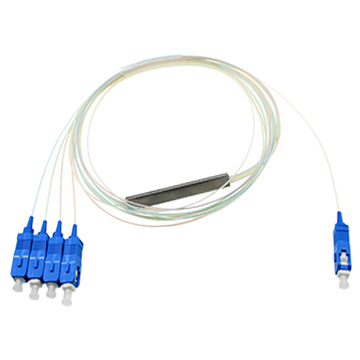
Understanding PLC Optical Splitters: How They Work and Their Applications
PLC optical splitters, also known as planar lightwave circuit splitters, are a key component in modern fiber optic networks. They enable the distribution of optical signals from one input fiber to multiple output fibers, allowing a single signal to be split and distributed to multiple devices. In this article, we will discuss how PLC optical splitters work and their applications in fiber optic networks.
How PLC Optical Splitters Work
PLC optical splitters are based on planar lightwave circuit technology, which uses a silica-based waveguide to split the optical signal. The waveguide is etched onto a thin film, which is then integrated into a chip. The chip contains several waveguides, each of which is designed to split the optical signal into multiple outputs.
When the optical signal enters the splitter, it is split evenly across the output fibers. The splitter can be designed to split the signal into a variety of configurations, such as 1×2, 1×4, 1×8, and 1×16, depending on the number of output fibers required. The optical signal is split without any loss in quality, enabling multiple devices to receive the same signal without degradation.
Applications of PLC Optical Splitters
PLC optical splitters are widely used in fiber optic networks, particularly in passive optical networks (PONs). PONs use a single optical fiber to serve multiple subscribers, and PLC splitters are used to distribute the signal to each subscriber. This enables service providers to offer high-speed internet, television, and telephone services to multiple subscribers using a single fiber.
PLC splitters are also used in data center networks to enable the distribution of optical signals from a single fiber to multiple devices. This allows for efficient use of resources and can simplify the network architecture, reducing the complexity of cabling and improving reliability.
PLC optical splitters are a key component in modern fiber optic networks, enabling the distribution of optical signals from one input fiber to multiple output fibers. They are based on planar lightwave circuit technology and can be designed to split the signal into a variety of configurations, depending on the number of output fibers required. PLC splitters are widely used in passive optical networks and data center networks, enabling efficient use of resources and simplifying the network architecture. By understanding how PLC optical splitters work and their applications, organizations can take advantage of this important technology to build reliable and high-performance fiber optic networks.
